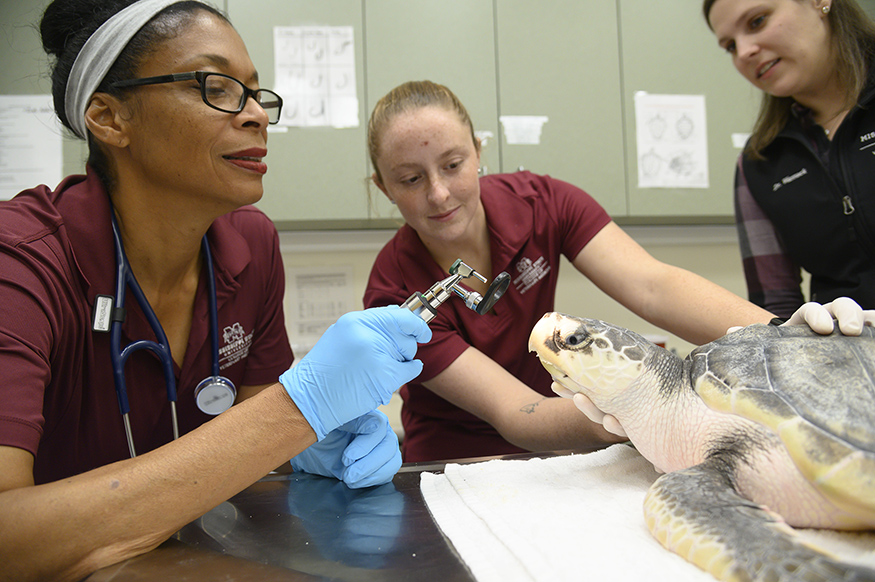
Contact: Alaina Dismukes
STARKVILLE, Miss.—Mississippi State is tackling the issues of environmental restoration and climate resilience through impactful research programs, and now the university’s efforts to advance projects along Mississippi’s Gulf Coast will move forward with help from a bill recently signed by Gov. Tate Reeves.
The Evaluation and Monitoring of Marine Mammal and Sea Turtles Abundance, Population Health, Habitat Delineation, and Restoration program, or EM MMST—a project that falls under the university’s Global Center for Aquatic Health and Food Security, or GCAHFS—is gaining approximately $2 million to support its work studying the population dynamics of marine mammals and sea turtles, their health, and the delineation of their habitat. This work hopes to effectively understand and monitor the restoration and recovery of their populations. The grant is a subset of $100,192,527 in Gulf of Mexico Energy Security Act, or GOMESA, allocations.
“This GOMESA funding is important to Mississippi for maintaining the overall sustainability and economic stability of the Mississippi Gulf Coast,” said Mark Lawrence, GCAHFS director and William L. Giles Distinguished Professor in MSU’s College of Veterinary Medicine and its Department of Comparative Biomedical Sciences. “We are extremely pleased that Mississippi recognizes the value of marine mammals and sea turtles in the Mississippi Sound and invests in monitoring and maintaining the health of these important species. We are honored that the state entrusts this investment to the experts in the MSU GCAHFS.”
This funding also seeks to have a One Health approach, balancing the needs of people, animals and the environment, he explained.
“The EM MMST program is part of MSU College of Veterinary Medicine’s overall One Health program for the Mississippi Gulf Coast,” Lawrence said. “As predator species, marine mammals and sea turtles are important sentinel species for monitoring aquatic wildlife health in the Mississippi Sound. Their health reflects the overall environmental quality, and it reflects the food web on which marine mammals and sea turtles depend.
“Some of the environmental threats that can affect human health in the marine environment also affect marine mammals and sea turtles, so monitoring the health of these animals can protect people from environmental health hazards such as toxic algae blooms. We also evaluate the impacts of human interactions on the cause of death for marine mammals and sea turtles, which will enable improved co-existence of people and aquatic wildlife in the Mississippi Sound,” he said.
The additional $2 million in the EM MMST program will aid in continued evaluation of the causes of marine mammal and sea turtle deaths related to the 2019 Bonnet Carre Spillway openings and also will support evaluation of marine mammal and sea turtle death trends in 2020-2023.
“The new funding will allow us to expand our investigation into evaluating the effects of different river sources on freshwater infusion into the Mississippi Sound,” Lawrence said.
Previous EM MMST program funding enabled the first-ever genetic analysis of the area’s marine mammal and sea turtle populations, and the new funding will contribute to further data collection.
“Our previous work under the EM MMST program included developing methods to predict the most likely location where marine mammals and sea turtles died,” Lawrence said. “The new $2 million in funding will allow us to better refine this model to improve its accuracy, and then apply the model to achieve a more complete picture of where the animals died in the Mississippi Sound. Ultimately, the more we know, the better we can protect marine mammals and sea turtle species.”
MSU is taking care of what matters. Learn more at www.msstate.edu.